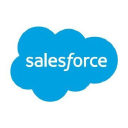I Make $312K/Year Selling T-Shirts For Nerds
Hello! Who are you, and what business did you start?
I am David Inman, founder of NerdKungFu.com. We are a nerdy t-shirt site specializing in officially licensed t-shirts, posters, and gifts for nerds and lovers of specific genres. Movies, TV Shows, Video Games, Comic Books, and anything else a passionate nerd might like, we carry! My team and I can talk the talk as we are all super nerds ourselves, passionate about our nerdy loves (I’m a Trek man myself), and wanting to show them to the world.
When I started the site in 2010 we had 100 t-shirts on a shelf in the back of my office. Today we have 165,000 products in sizes ranging from infant 6 months up to 7 XL (we sell a lot of plus-sized shirts) as well as hoodies, tank tops, long sleeves, and v necks. We have an excellent selection of posters and gift items as well.
Here’s a pic. I’m the guy on the right.


Download the report and join our email newsletter packed with business ideas and money-making opportunities, backed by real-life case studies.

Download the report and join our email newsletter packed with business ideas and money-making opportunities, backed by real-life case studies.

Download the report and join our email newsletter packed with business ideas and money-making opportunities, backed by real-life case studies.

Download the report and join our email newsletter packed with business ideas and money-making opportunities, backed by real-life case studies.

Download the report and join our email newsletter packed with business ideas and money-making opportunities, backed by real-life case studies.

Download the report and join our email newsletter packed with business ideas and money-making opportunities, backed by real-life case studies.

Download the report and join our email newsletter packed with business ideas and money-making opportunities, backed by real-life case studies.

Download the report and join our email newsletter packed with business ideas and money-making opportunities, backed by real-life case studies.

































